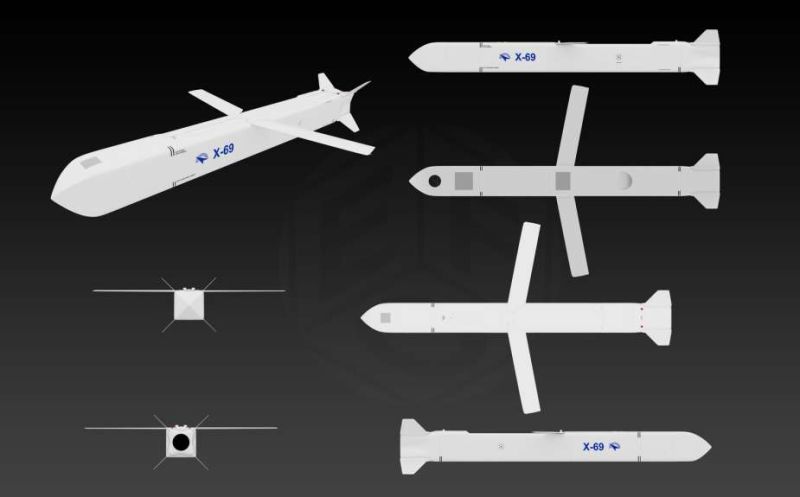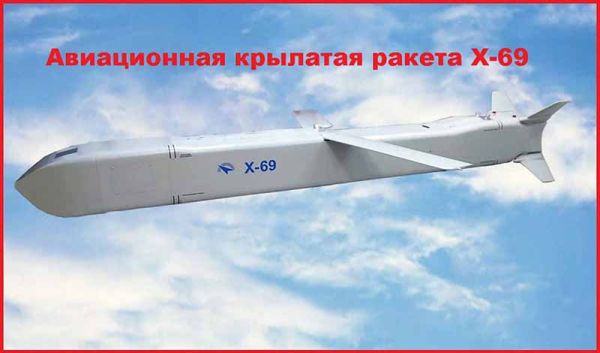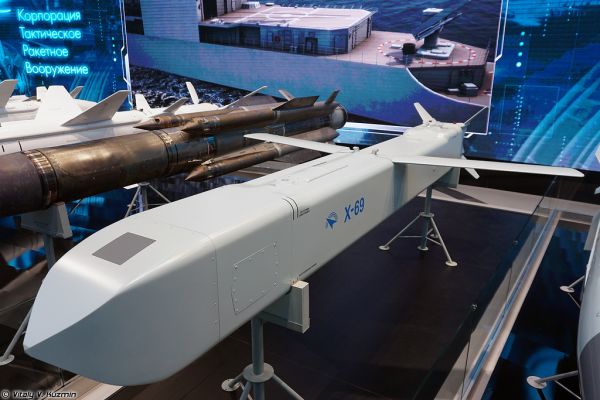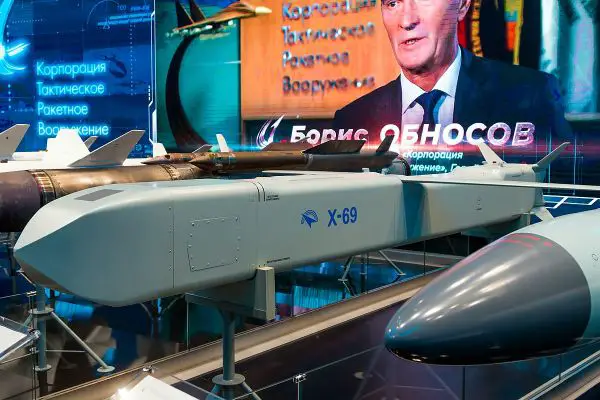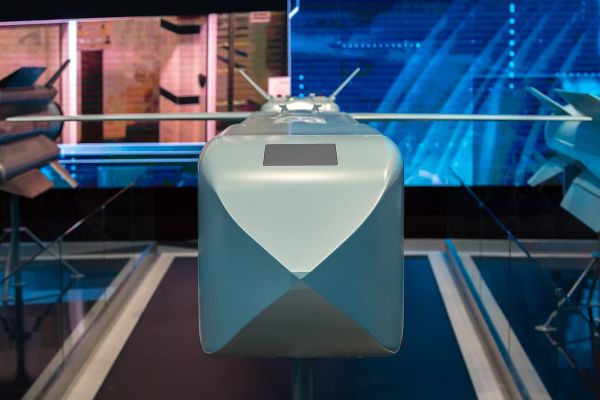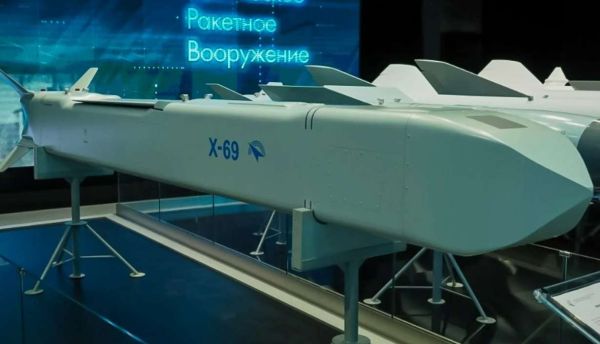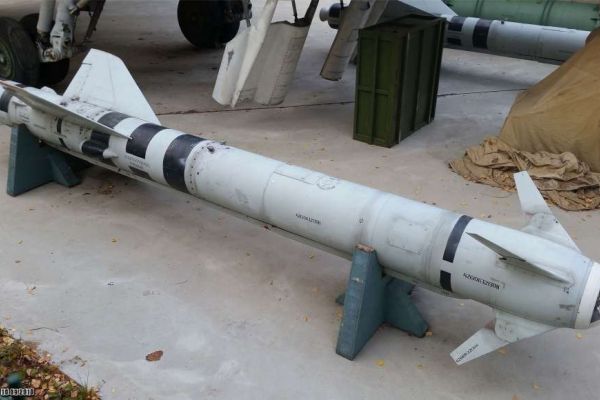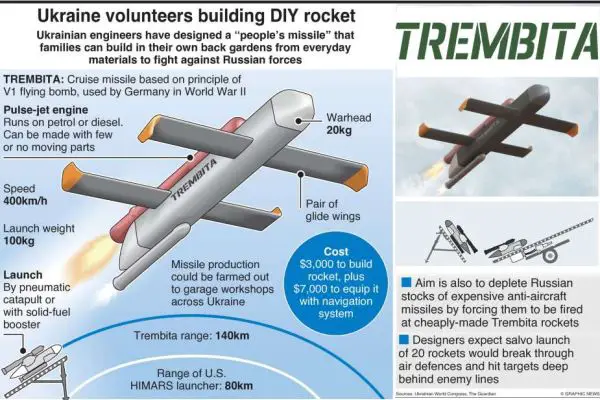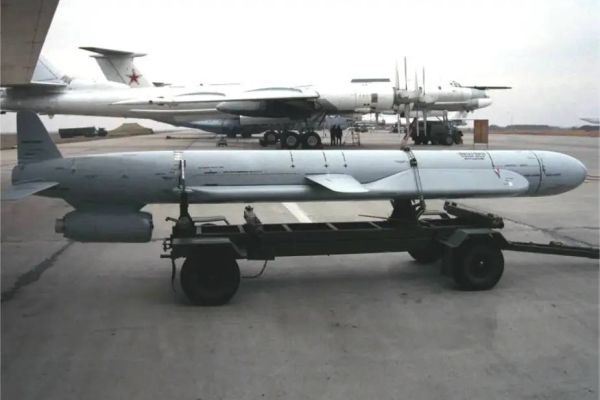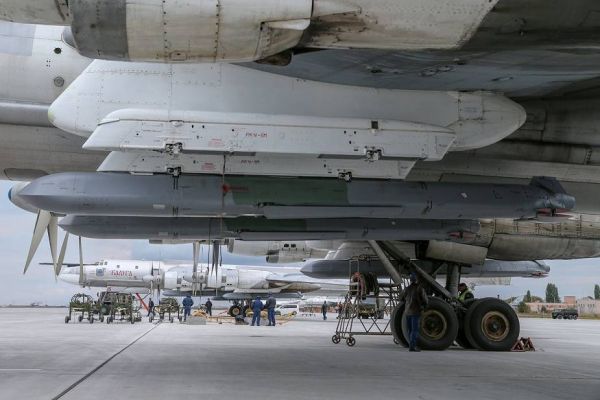Cruise missiles.
Kh-69 Х-69.
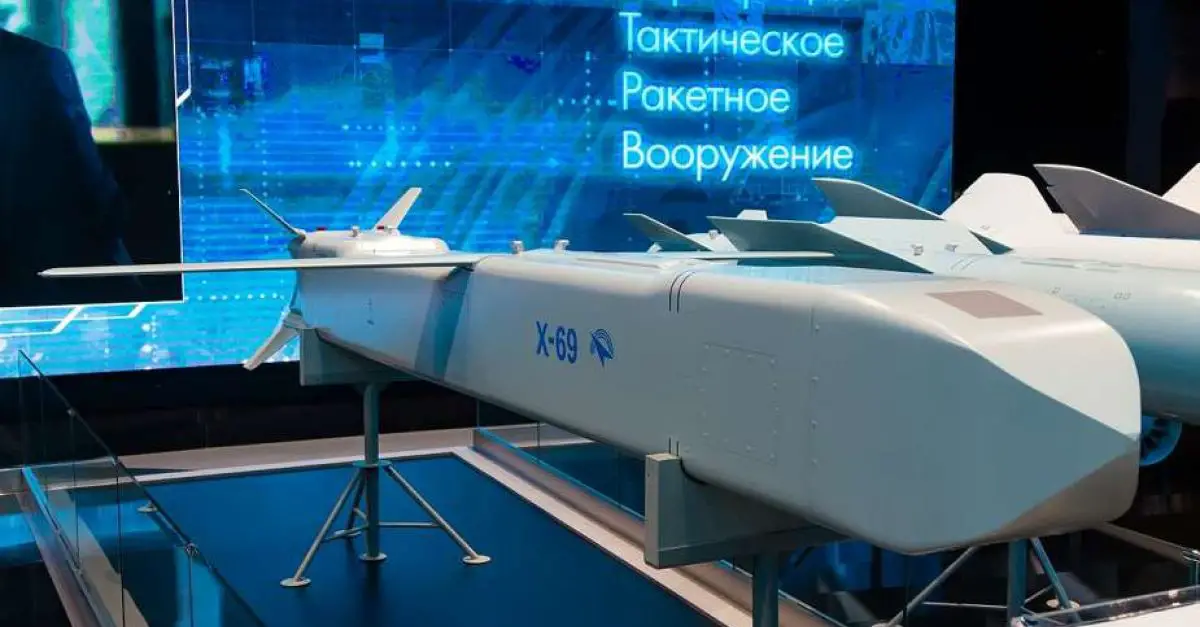
The Kh-69 cruise missile, developed by Tactical Missiles Corporation (KTRV) and designed by MKB Raduga, is a modern air-launched subsonic missile intended for precision strikes against high-value static targets. First unveiled in August 2022 at the Army-2022 military exhibition in Moscow, the Kh-69 has quickly become an integral part of Russia's strategic and tactical strike capabilities. It represents an advancement over earlier models, particularly the Kh-59MK2, incorporating stealth technology to enhance its effectiveness on the battlefield.
Country users: Russia
Description
The development of the Kh-69 began in the late 2010s as an upgraded version of the Kh-59MK2, aimed at addressing the need for a more versatile and stealthy cruise missile. The missile was designed to engage stationary targets with known coordinates, using a combination of advanced guidance systems to ensure high accuracy. Capable of being launched from a variety of Russian combat aircraft, including the Su-30MK, Su-34, Su-35, Su-57, MiG-29K, and MiG-35, the Kh-69 adds significant strike capability to these platforms. The missile's integration with these aircraft enhances their operational flexibility and allows for a broad range of tactical applications.
Kh-69 Х-69 variants:
No variants at this time.
Technical Data
-
Design
The Kh-69 features a sleek, trapezoidal-section body optimized for low radar visibility. Its design includes a pair of pop-out wings and four rear fins that deploy after launch to provide stability and maneuverability. The missile measures approximately 6.0 meters in length, with a wingspan of 1.5 meters and a diameter of 0.42 meters. It has a launch weight of around 800 kg, including a warhead weighing approximately 310 kg. The missile's structure incorporates wave-absorbing materials to reduce its radar cross-section, making it difficult to detect and intercept.
-
Warhead
The Kh-69 is equipped with a high-explosive fragmentation or penetration warhead, capable of destroying a variety of target types. The 310 kg warhead can effectively neutralize hardened structures, bunkers, and other fortified targets, ensuring maximum damage upon impact. The missile's warhead design is versatile, allowing it to adapt to different mission requirements and target characteristics.
-
Propulsion
The missile's propulsion system includes a solid-fuel rocket booster for initial acceleration and a turbofan engine for sustained cruise flight. This combination allows the Kh-69 to achieve a cruise speed of approximately 700-1,000 km/h, maintaining a stable and efficient flight path towards its target. The solid-fuel booster provides the necessary thrust for launch, while the turbofan engine ensures long-range capability and high fuel efficiency during the cruise phase.
-
Guidance System
The Kh-69 employs a sophisticated guidance system comprising GPS and GLONASS satellite navigation, backed up by an inertial navigation system (INS) for mid-course guidance. For terminal guidance, the missile uses an electro-optical (EO) seeker, which provides high-resolution targeting information, allowing for precise homing on the target. This dual-mode guidance system ensures high accuracy, with a maximum deviation of less than 5 meters, making the Kh-69 highly reliable in striking its intended targets.
. -
Combat Use
In combat scenarios, the Kh-69 is designed to engage a variety of high-value targets, including air defense systems, command centers, and infrastructure. Its extended range of up to 290-400 km allows it to strike deep within enemy territory while keeping the launch platform at a safe distance. The missile's low-altitude flight profile, flying as low as 20 meters above ground level, combined with its stealthy design, enhances its survivability by reducing the likelihood of detection and interception by enemy defenses. The Kh-69's integration with advanced Russian aircraft further amplifies its strategic value, providing a potent tool for precision strikes in modern warfare.
Specifications
-
Type
Subsonic air-launched cruise missile.
-
Country users
Russia
-
Designer Country
Russia
-
Warhead
310 kg high-explosive fragmentation or penetration warhead
-
Engine
Solid-fuel rocket booster
-
Range
290 to 400 km
-
Weight
Up to 800 kg
-
Speed
Up to 1,000 km/h
-
Guidance System
GPS and GLONASS satellite navigation
-
Dimensions
Length: 6.0 m; Diameter: 0.42 m; Wingspan: 1.5 m
























